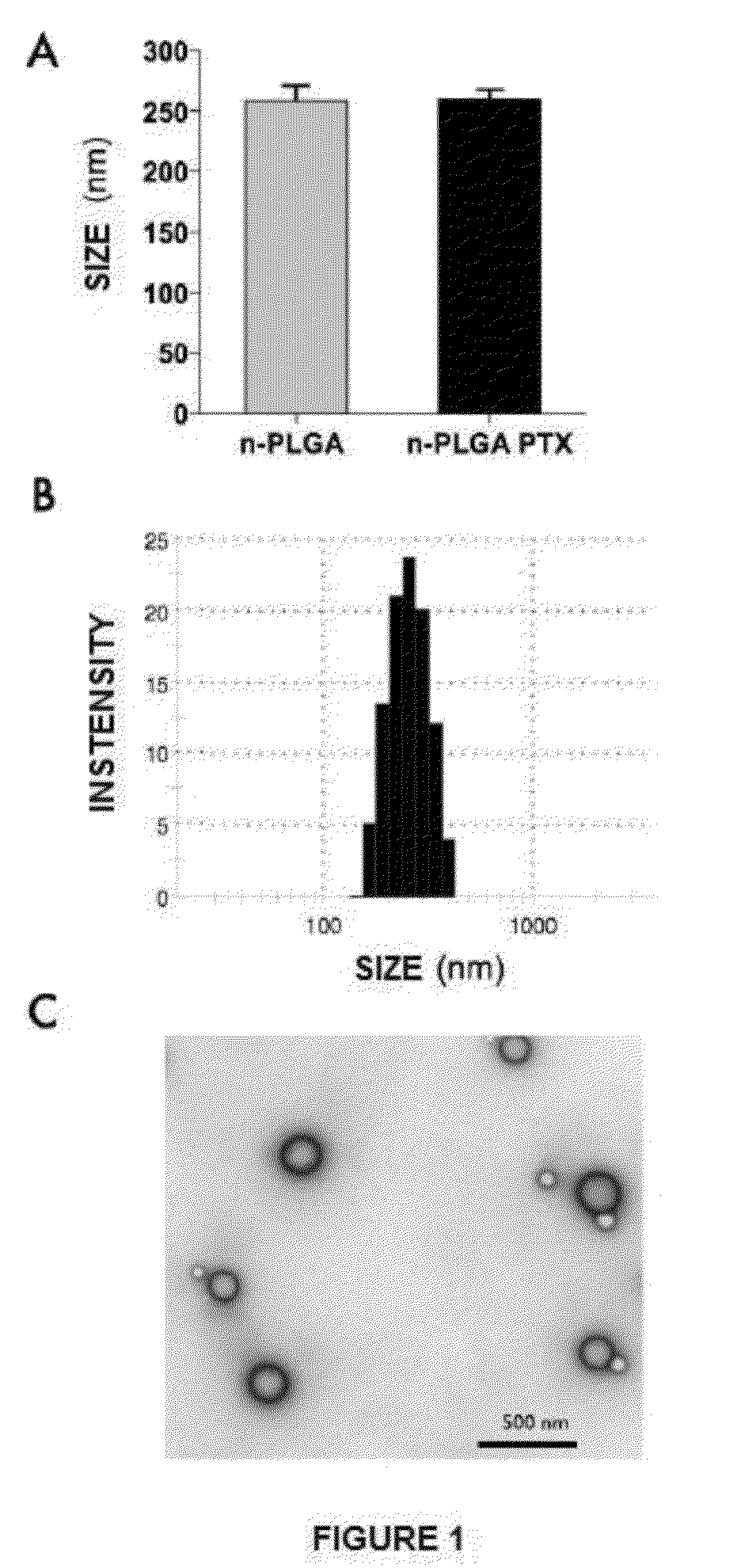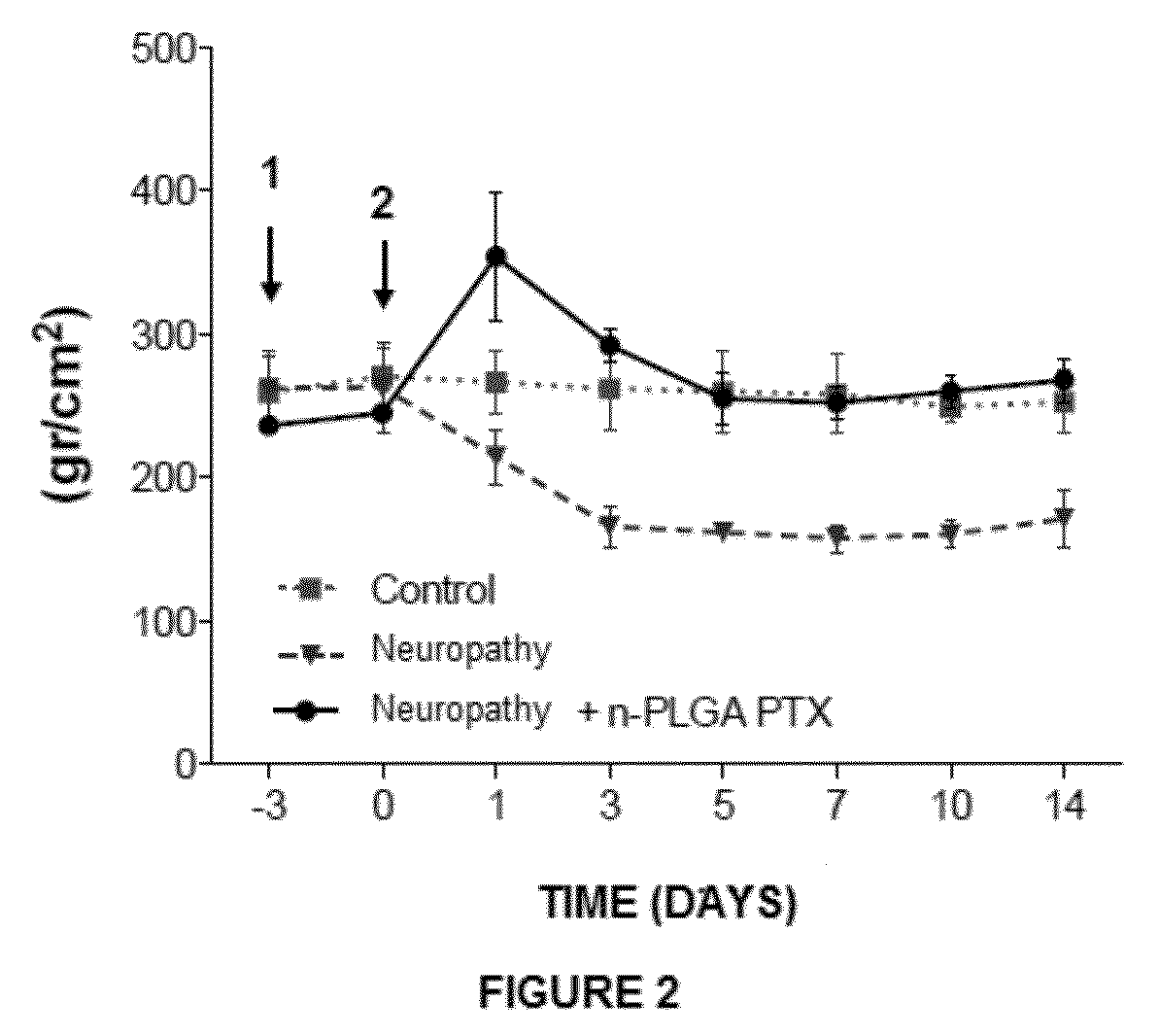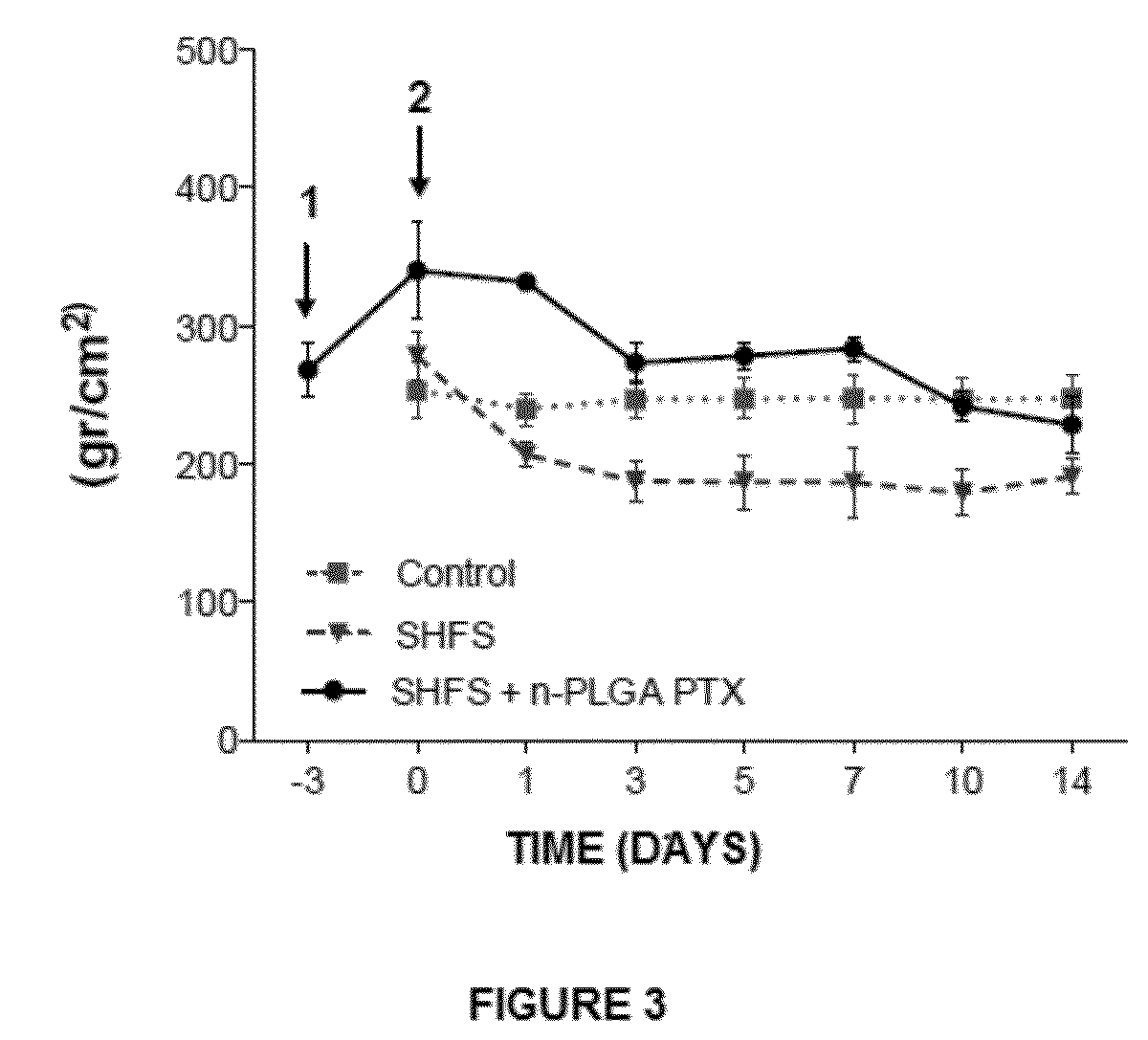Nanoparticles with biodegradable and biocompatible polymer plga, loaded with the drug for human use pentoxifylline
a biocompatible, nanoparticle technology, applied in the field of nanoparticles with biodegradable and biocompatible polymers, loaded with the drug for human use pentoxifylline, can solve the problems of endless experience, no effective drug treatment for chronic pain, and becoming chronic (or pathological)
- Summary
- Abstract
- Description
- Claims
- Application Information
AI Technical Summary
Benefits of technology
Problems solved by technology
Method used
Image
Examples
example 1
Synthesis and Characterization of Polymeric Nanoparticles Loaded with pentoxifylline (nPLGA-PTX)
[0125]Nanoparticles (NPs) loaded PLGA pentoxifylline (PTX-nPLGA) were synthesized by a modification of the method of double emulsion (water / oil / water phase) described by the group of Li (Li et al, 2001). The type of PLGA (Sigma) used comprises proportions of 50% polylactic acid and 50% polyglycolic acid. PLGA copolymer (3 mg / mL) dissolved in dichloromethane (Sigma), and the drug (PTX, Sigma) was dissolved in milliQ water. The dissolved drug (0.5 mL) was added to the PLGA solution (3 mg / mL) previously cooled with ice. Then, this mixture was emulsified with a sonicator (VCX 130, Sonic Vibracell, USA) at 100% amplitude (frequency 20 kHz, power 130 watts) for 80 seconds. To this emulsion was added a solution of 0.5% w / v polyvinyl alcohol (PVA, 87-89% hydrolysed, Sigma) dissolved in milliQ water and was homogenized twice at 100% amplitude (20 KHz, 130 watt ) 15 seconds and 40 seconds each time...
example 2
Encapsulation Efficiency and In Vitro Release Kinetics
[0128]The encapsulation efficiency (EE %) of PTX was determined by quantitative comparison of the amount of drug between the initial charge and the rest of the drug remaining in solution after centrifugation of nPLGA-PTX, during the period preparation of nanoparticles. The amount of drug was determined by UV-visible spectrophotometry (Agilent 8453, Agilent thecnologies, Alemania) a una longitud de onda de 273 nm en cubeta de cuarzo semimicro o UPLC (Acquity system, Waters, Milford, Mass., USA).
[0129]Chromatographic separation of the PTX was performed on a C18 column of dimensions 50×2.1 mm, 1.7 μm; mobile phase had a ratio 89:1:10 (v / v) water, methanol and acetonitrile at a flow rate of 0.6 mL / min. Detection was obtained at a wavelength of 273 nm, with an injection volume of 5 uL. EE % was determined from the following relationships:
Theoretical load capacity=total drug / (total drug+polymer) (i)
Actual load capacity=encapsulated d...
example 3
Determination of the Analgesic Properties and In Vivo Comparison of Nanoparticles
[0131]Animals
[0132]A total of 89 male Sprague-Dawley rats weighing 200-250 grams were used. All rats were obtained from the animal house of the University of Chile School of Medicine. The rats were kept in controlled conditions of light darkness (12:12, light: dark), temperature (22+3° C.) and airflow. Counted animals with food and water ad libitum. Daily cages were neat and animals were evaluated on their general condition (general appearance, weight and size). Ail experimental protocols were conducted according to the “Guide Care of Laboratory Animals” published by National Institutes of Health (NIH), the “guide for the ethical use of animals in research of pain” (Jayo Cisneros, 1996) published by International Association for Study of Pain (IASP) and the Ethics Committee of the University of Santiago, Chile.
[0133]Chronic Pain Models
[0134]Mononeuropathy
[0135]Experimental animals were anesthetized with...
PUM
| Property | Measurement | Unit |
|---|---|---|
| power | aaaaa | aaaaa |
| frequency | aaaaa | aaaaa |
| power | aaaaa | aaaaa |
Abstract
Description
Claims
Application Information
 Login to View More
Login to View More - R&D
- Intellectual Property
- Life Sciences
- Materials
- Tech Scout
- Unparalleled Data Quality
- Higher Quality Content
- 60% Fewer Hallucinations
Browse by: Latest US Patents, China's latest patents, Technical Efficacy Thesaurus, Application Domain, Technology Topic, Popular Technical Reports.
© 2025 PatSnap. All rights reserved.Legal|Privacy policy|Modern Slavery Act Transparency Statement|Sitemap|About US| Contact US: help@patsnap.com



